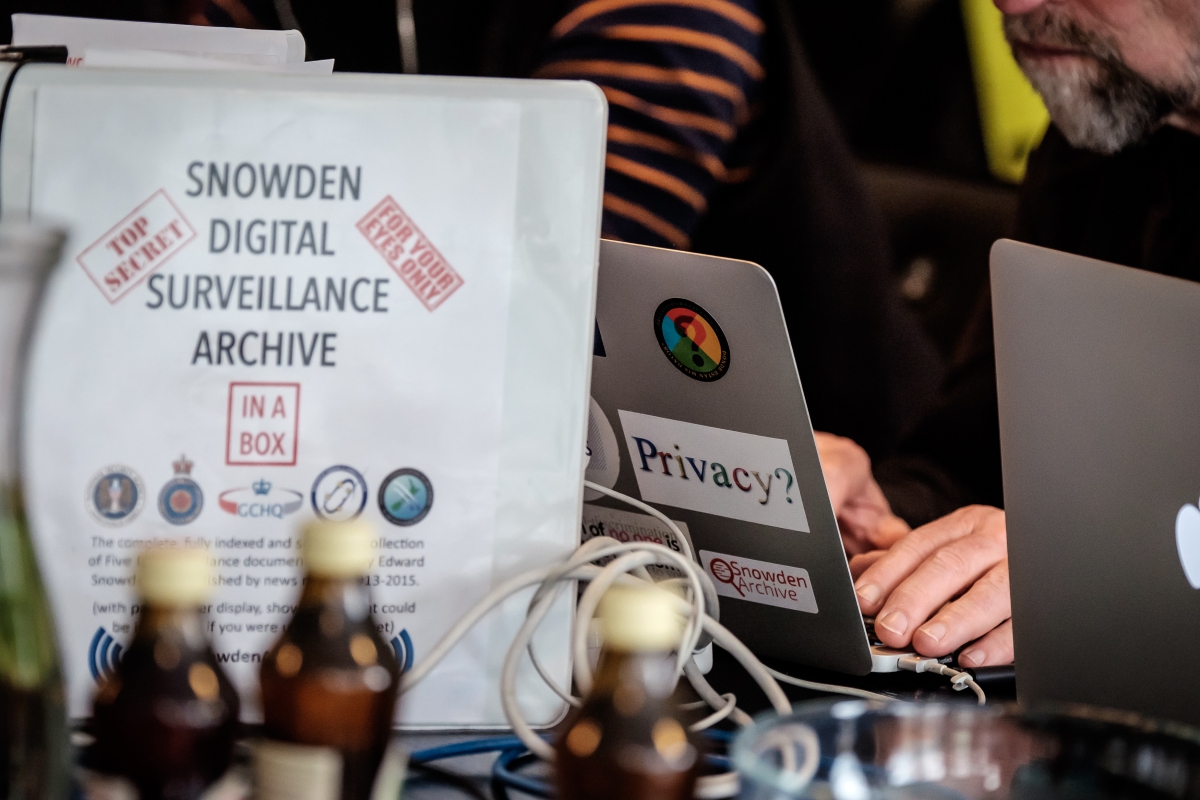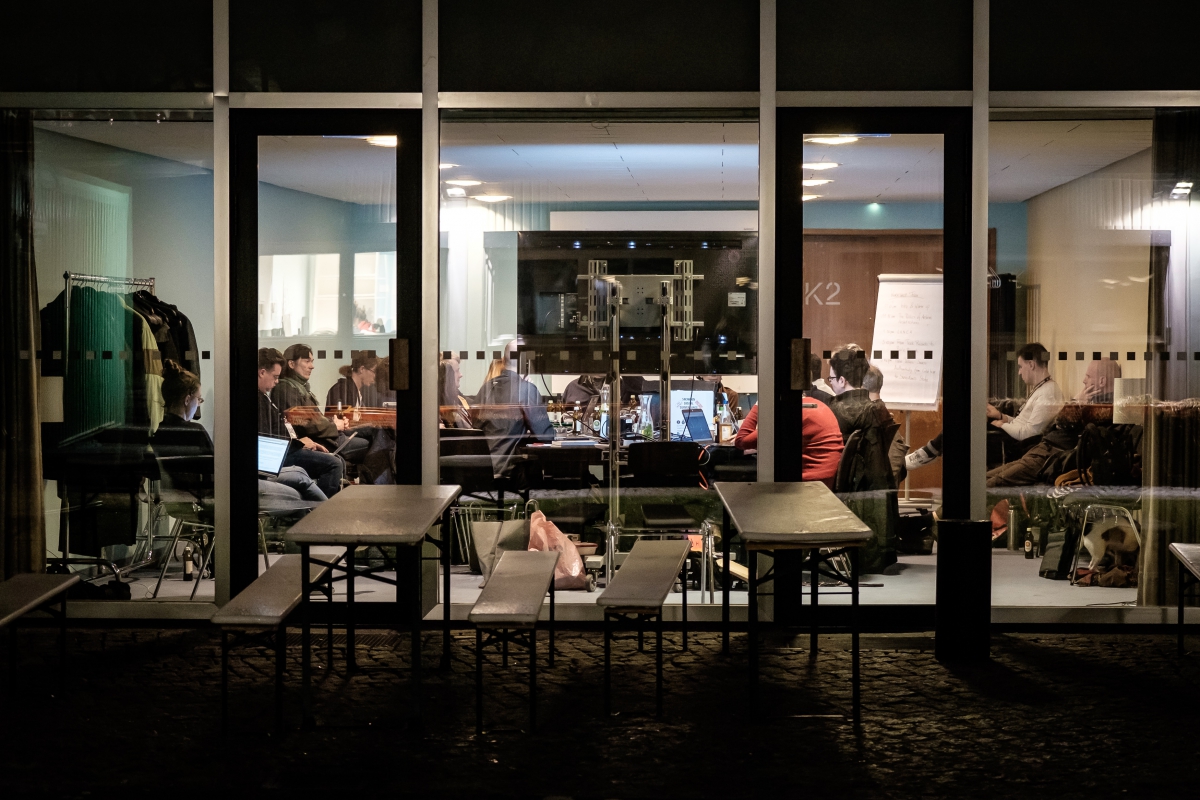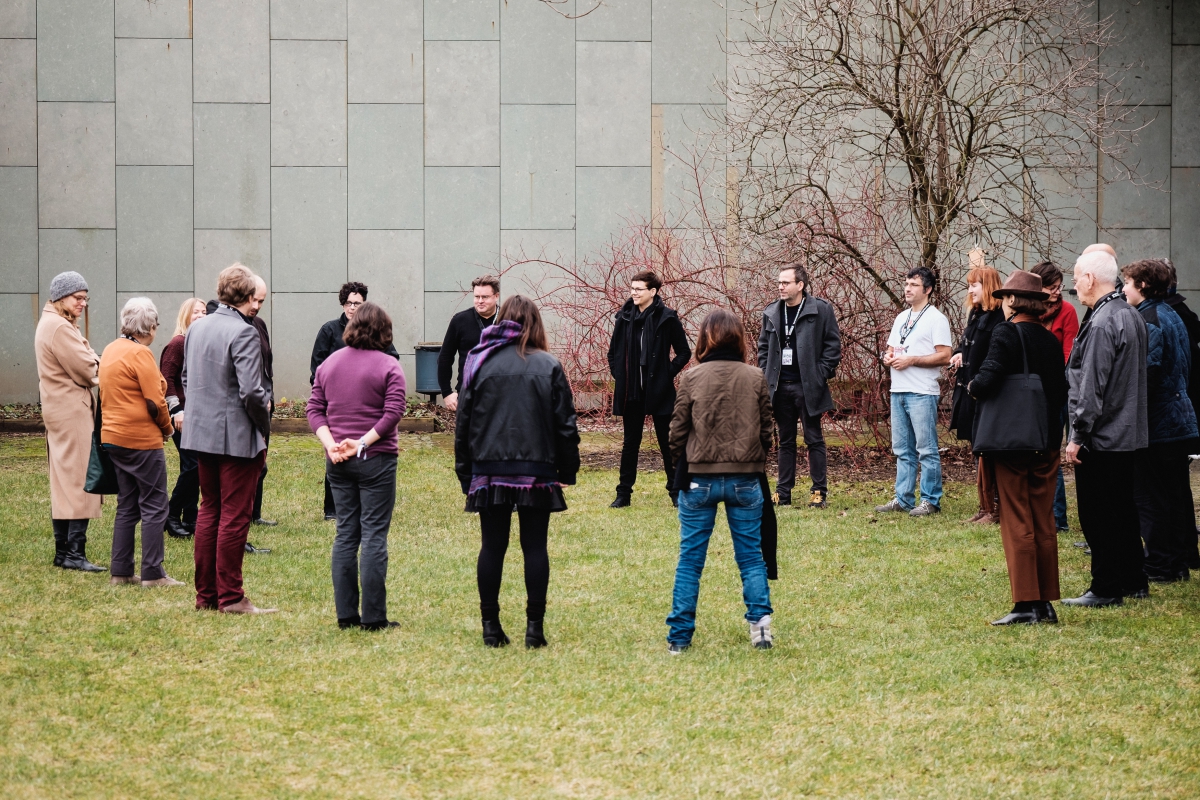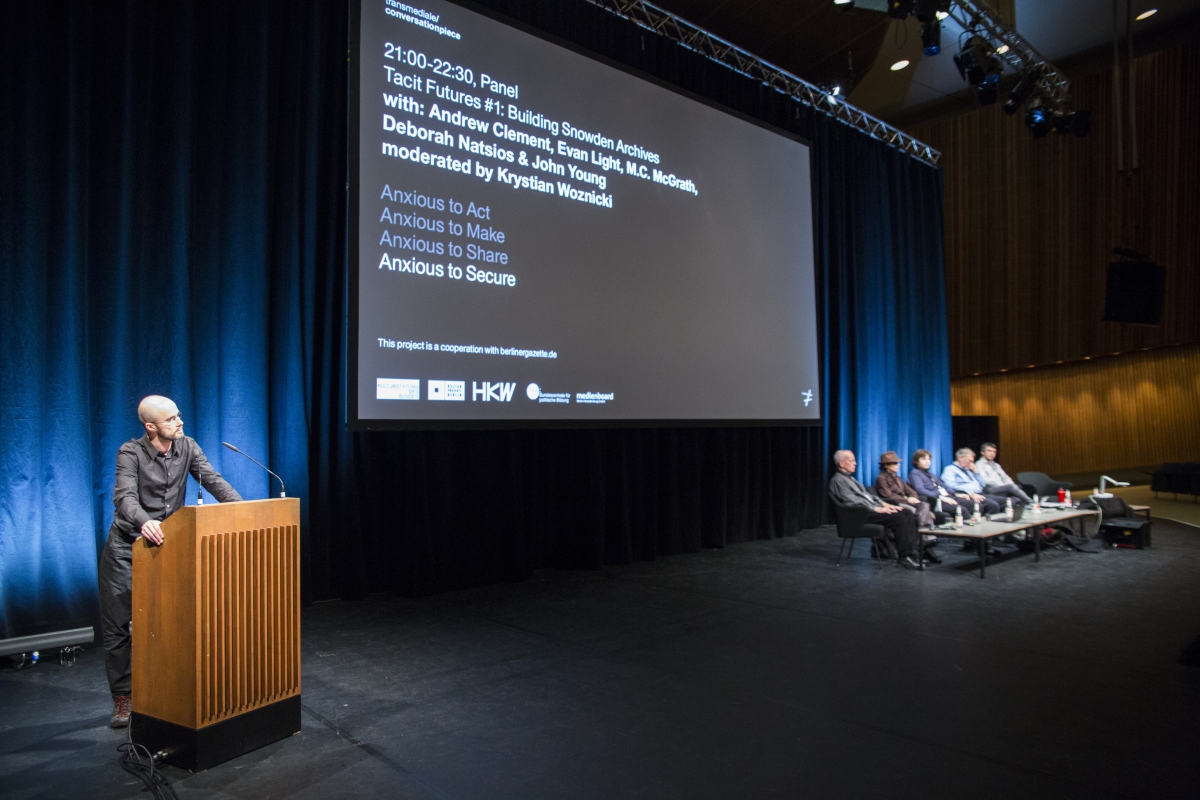Freud meets the NSA: How the Snowden Archives Reveal a Collective Unconscious
Freud meets the NSA: How the Snowden Archives Reveal a Collective Unconscious
The Snowden Archives represent a type of collective unconscious, constructed by secret partnerships between intelligence services, the IT industry, and the complicity of internet users in games of power and data. The archives reveal things society would never have known about itself, or its future. Now with access to the archives, citizens can rehabilitate what has been displaced and actively shape the future—a central focus of this year’s project by Berliner Gazette, Tacit Futures.
The Revelations
Snowden’s revelations provided proof of what many could previously only guess at. For populations that are increasingly mobile, life is being played out under a secret service microscope, which has far-reaching implications for freedom and democracy. The various Snowden Archive initiatives in New York, London/Berlin, and Toronto, refusing to accept the new evidence passively, were set up shortly after the first wave of revelations in 2013. Archiving the Snowden documents became a form of resistance to democratic imbalance created by an unrestricted intelligence service doing whatever it wants.
Unaware of each others’ activity in the early months, the various initiatives working to archive Snowden’s leaks were carrying out pioneering work, working to solve many of the pressing problems that have arisen since the leaks. The method by which Snowden made the information public allowed its mishandling in some cases. Snowden entrusted the documents to a handful of selected journalists who released the revelations through a small number of media outlets. Sources were not always disclosed or made available. In some cases it is only possible to find the journalistic substrate of documents, not the documents themselves. Furthermore, the files have been scattered across different platforms impeding searches, and their status is insecure: as we know from past events, what Google can easily find today may be gone from the internet by tomorrow. The security and long-term availability of the Snowden files had not, thus far, been dealt with.

Archive for the Future
The archive initiatives intend to counteract the mishandling of the information’s publication because their proponents have, as Geert Lovink states, recognized the political and contemporary-historical significance of the Snowden revelations. They want to make the leaked documents available to the legitimately interested general public. They want to secure and process them in such a way that they, and all that they imply, is understandable. Journalists, those active in political education, scientists, activists, community groups, lawyers, and other groups should be able to browse through the documents, work with them in their own spheres, and use them to support their own forms of civil resistance. Not least, the archives need to be set up for the future, to secure them as historical evidence.
Interview with Geert Lovink (Institute for Network Cultures). Video Courtesy Berliner Gazette.
To address these goals, the archiving initiatives have adopted the traditional tasks of archivists and librarians: gathering published materials and sources, offering access, providing guidance, and managing preservation—tasks which, taken together, may be referred to as “curating.” The archivists also bring scattered documents together and connect them with secondary sources, such as media reports. They develop categories to use for classifying and indexing documents, and apply a range of search and filter options to make them browsable and searchable. To ease access for users, they create glossaries and user guides. They create mirror sites to safeguard the archive, and in one case an offline version is being maintained.
While the archive initiatives have similar overall aims, the very different contexts they operate in mean they have divergent interests. Snowden Document Search is a comprehensive Snowden document database run by the Courage Foundation, a foundation that has taken on legal and media representation of whistleblowers. Naomi Colvin built the archive with programmer and activist M.C. MacGrath. The platform maintains a list of revelations, allows users to find documents with the help of various filter options, and offers some of the most advanced archiving tools. A project launched by Maria Xynou, Surveillance Without Borders, demonstrates very concretely what can be done with such an archive. Using the Snowden documents as a basis, the project illustrates how surveillance functions worldwide. The sorts of monitoring specific to each country are visualized with Google Data Maps.

WikiLeaks Forerunners
The Snowden Digital Surveillance Archive has been brought back to life in the context of Canadian university and journalism organizations. The initiator is information scientist Andrew Clement, Professor Emeritus at the University of Toronto, where he has been conducting research into surveillance for more than thirty years, and is, with colleague David Lyon, one of the founders of the Surveillance Studies field. The archive was developed in cooperation with Canadian Journalists for Free Expression (CJFE), where it is also hosted. Published Snowden documents are continually added and made accessible with various search categories. A glossary facilitates the reading of documents. The Snowden Archive-in-a-Box demonstrates, in turn, another possible application of such an archive. It is the offline version of the Snowden Digital Surveillance Archive, under the care of Evan Light as part of a post-doctoral fellowship at Concordia University. The box offers protected, and therefore anonymous, access to Snowden documents.
Tally Update was launched by cryptome.org. The project, regarded as the forerunner of WikiLeaks, is the mother of all digital leak platforms. John Young and Deborah Natsios, two architects from New York, have been operating the project in their free time for more than 25 years. They are digital activism pioneers who place a strong focus on transparency requirements for intelligence services. In contrast to other archive initiatives, they see themselves not just as collectors, custodians, and guides; they are also vehement supporters of open access to the entire collection of documents leaked by Snowden. Currently, only an estimated ten percent of the material has been made public.
Tally Update offers no search function, but has a unique taxonomy. All documents are filed chronologically, and also by media and publishing location. The archive logs new documents fastest in comparison to others and consequently has possibly the most authentic files, since it may be assumed that documents, even those already published as a source once, have been tainted by retrospective “editing” and re-uploading. The archive also has a number of revealing features, such as infographics that address questions such as: how long will it be until all the Snowden documents become available? How old will all the participants be then?

User Guides with Security Tips
These archives represent an attempt to bring together heterogeneous documents and prepare them in such a way that they can be easily accessed and understood. Technical changes or other modifications are necessary at times. Because all of the archives except Snowden Archive-in-a-Box are online, they all share a security problem: accessing them is impossible without the risk of being monitored. An important desideratum is then the development of user guides with security tips, as well as the building of alternative access points including offline or even via printed material, with discussion about making books, too. All the initiatives share the discomfort of having neither reliable criteria for verifying the authenticity of documents, nor a feeling for the collection as a whole. Too many documents are still missing. What still lies hidden in the collective unconscious of the Snowden leaks?
Since approximately a thousand documents have already been published, it is at least possible to get an idea of what the complete Snowden archive may look like in 20 years. The documents are very heterogeneous; there are presentation slides, scribbled graphs, lists, text, and more. They are teeming with incomprehensible terms and abbreviations. Names of companies that worked for the NSA are coded. In addition to search tools, a research and reading strategy is necessary to develop a real understanding of the documents. But what is the right one? Andrew Clement recommends beginning selectively: sooner or later someone runs into a document that fascinates them. They decrypt it using the glossary codes and gradually become more intensively engaged with the material.
Sarah Harrison offers advice for broader searches. Instead of first searching for specific topics—“text mining”—it is better to develop a sense of the sorts of materials being dealt with, whether they are internal communications or correspondence between business partners, i.e., the byproducts of everyday operations. They should be viewed as predecessors or updates to other documents; they have an episodic character and are always part of a series. There is much in them that is implicit. because the addressee’s prior knowledge is assumed. A topic that is interesting should be widely “read around” so that its documentary context is as familiar as possible.

Indexing Methods and Search Tools Maintaining a critical distance is also important. Many statements are likely to correspond to a specific perception on the part of the participants. It is advisable to be wary of ideologically colored statements, which include euphemisms, clichés, and the circumnavigation or omission of controversial issues. To read a particular document with accuracy, metadata must be taken into account. That is, what the document says about itself according to the publication date and other data. Though Harrison was primarily referring to the Public Library of US Diplomacy (PlusD) with her comments, her tips can just as effectively be applied to the Snowden documents. Perhaps the initiators of the Snowden archives will include such advice in their user guides.
I believe that such efforts are the key to the success of an archive. What is an important, indeed historical, resource worth if it is not broadly accessible? This work cannot be passed off to experts; then the matter would have to be delegated to intelligence services, since only they understand the language employed in the documents, and only they really understand what is being spoken of in each case. So the archive must be opened in a way that is, to a certain extent, friendly to the public, and then prepared accordingly.
Aspects of public-friendliness include indexing methods and search tools. Through indexes and metadata—document descriptions—archive accessibility is improved. In addition, original documents can be linked to related news and media reports. A glossary that decrypts company code names, for example, as well as comprehensive search options, facilitates a better understanding of government monitoring programs in their entirety. The archive is directed towards researchers and journalists, but also to a broader public.

Becoming a Part of Pop Culture
The Snowden Archive-in-a-Box offers an extra-special feature for public accessibility. As an offline archive, it provides secure access with no surveillance risk. The archive is saved on a mini computer (Raspberry Pi) and can be inexpensively reproduced. The neetwork can therefore be installed almost anywhere and used in all sorts of places. Taken together, the research features, offline access, and mobility make it easy to take the archive from the circles of archivists and activists to a wider public. It can be used in exhibitions, schools, political education institutes, public libraries, and scientific libraries. It can be therefore become, as stated by its initiator, Evan Light, a part of pop culture, or even a Commons.
Visualization also plays an important role. The optical nature of Surveillance Without Borders, which provides maps showing monitoring worldwide, contributes a great deal to public accessibility. But what is particularly interesting is the organization of material. Surveillance Without Borders classifies the documents based on groups of people who are the objects, or actors, of monitoring. Six categories were developed from the classification: “political leaders,” “companies,” “cooperation between companies and intelligence services,” “cooperation between intelligence services worldwide,” “mass surveillance of citizens,” and “targeted surveillance of citizens, either groups or individual persons.”
All documents are assigned to one of the six categories and cataloged according to country, so surveillance objects and actors can be searched for in specific states and regions. This approach makes groups of people, countries, and surveillance processes visible, providing a local point of entry and the opportunity to be active at a local level. The aim of Maria Xynou, the initiator of the project, is to coordinate and support interested groups.
Interview with Maria Xynou (Surveillance without Borders). Video Courtesy Berliner Gazette.
All Images courtesy Berliner Gazette.
These approaches are exciting because they can address specific target groups and contribute to the wider dissemination and popularization of the Snowden documents. Archives, especially archives like these that so extensively preserve the societal unconscious, should not remain just a passive resource. Otherwise, the truth will remain surpressed.
Corinna Haas works as an Academic Librarian at ICI Berlin Institute for Cultural Inquiry. She has been involved with Berliner Gazette since 2013.
Krystian Woznicki has worked as a journalist, a correspondent, a curator, and a media producer. For ten years he has been editor-in-chief of Berliner Gazette, and since 2009 he has been the publisher.
This text was originally published in German as “Freud trifft NSA: Wie Snowden Archive eine Art kollektives Unterbewusstsein offenlegen” in Berliner Gazette. You can find further articles on this year's project TACIT FUTURES online (German only).
Additional interviews which were made in the course of the Tacit Futures workshop at transmediale/conversationpiece can be found on the vimeo channel of Berliner Gazette.





